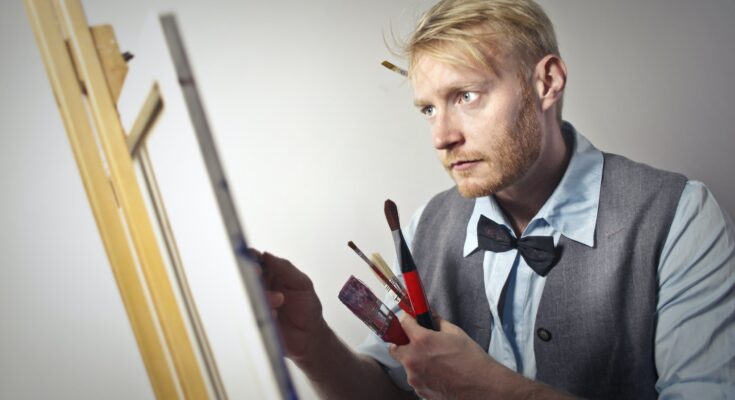Many debates in 2023 focused on artificial intelligence (AI) and its ethical use in each of the cultural aspects. The impossibility of distinguishing a real image from one generated by algorithms or the legal holes that still need to be corrected in terms of copyright on intellectual property are some of the points that generate the most rejection when implementing and embracing these emerging technologies. But, as in other contexts, AI did not arrive to replace humans but to enhance their capacity, also in the most artistic and creative fields.
In this post, we explore how artificial intelligence is challenging creativity, and pushing the limits of different artistic disciplines such as music and advertising. Professionals and artists can take advantage of these new tools to create unique, personalized, and innovative experiences and thus be able to connect with their audience.
Can AI replicate human creativity?
For a long time it was predicted that the development of new technologies such as photography, film, or video could eventually replace more traditional disciplines and media such as diamond art and that, therefore, it was going to die. We know that it was not like that and that different media coexist, intersect, and reconfigure.
In the same way, technological progress exhorts us to ask ourselves if human creativity and invention can be equaled and even replaced by artificial intelligence, putting the future livelihood of the artist at risk. What are the creative limits of AI? Like all technology, it requires the human touch to learn, redesign, and ‘improvise’, but it also needs proper regulation and understanding, like any new instrument.
This new universe of artificial intelligence and algorithms proposes a change in the link between the work and the artist, even with the public, but “in many ways, it is not radically transformed in relation to previous artistic productions.
When artificial creativity and music merge
“We develop artificial intelligence algorithms so that robots can understand music, improvise, sing, compose, play and write songs,” says Gil Weinberg, founding director and professor of the Center for Music Technology at Georgia Tech, from the Robotic Musicianship group they created Shimon: a robotic musician capable of improvising, singing and playing the piano in real-time in concerts alongside humans.
Weinberg, a musician always in search of new ideas, found in technology an unlikely ally to conceive melodies in a different way. The algorithms he uses are based on human input, which is why it is said that machines do not generate music from scratch, but they redefine that data “to create surprising and inspiring acoustic sounds.”
“Shimon can take music from humans in real-time and respond to it by improvising. He can respond to voice. The equivalent of jazz,” says the professor and adds: “I don’t think Shimon can surpass humans. Humans have a unique, emotional, and creative way of thinking about music.
What he does is improve human music.”
Weinberg uses AI as an instrument to inspire and help individuals enhance their own creativity, never with the intention of replacing it. Something similar to what Karen Palacio proposes with her work: a visual essay created from live programming and machine learning. “My raw material is computing. “I think in terms of transformations and algorithmic processes to reach a result, or even beyond, to be able to propose ways of doing,” says this programmer and artist who fuses the ancient with the contemporary, awarded the Itaú Prize for Art and Artificial Intelligence.
Karen uses scientific computers to make art through Live coding, an experimental practice of audiovisual creation. In her words: “A form and a search for the dissemination of computing, and also a search to close the digital gap that exists in society, to bring people closer to computing and to think about ways of using the computer that “They don’t have to do with revenue, but with creativity.”
AI at the service of the consumer
Artificial intelligence influences our purchasing decisions and consumer habits, often without us realizing it. This is how, for example, the movie and series recommendations that streaming platforms offer us work, based on our preferences and previous choices. The idea is to understand what the user wants and develop specific, personalized campaigns, adapted to each individual to improve and amplify their experience. This is valid for on-demand systems such as Netflix and Spotify, but also for new advertising channels where AI and technology enhance the brand.
The evolution of music with AI
Some composers and music producers propose that when wanting to interpret a song lyric by another singer, it is important to try to interpret the character as best as possible, so the final result is even more similar. Thanks to AI, anyone’s voice can be cloned, as long as the sound quality is good, so artificial intelligence can do the job in the most successful way possible. Under homage and respect, thousands of things can be done.



